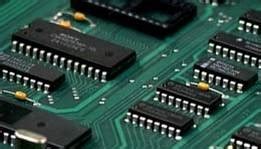Key Factors Influencing PCB Cost
1. PCB Size and Complexity
The size and complexity of a PCB are among the most significant factors that impact its cost. Larger PCBs require more materials and take longer to manufacture, resulting in higher costs. Additionally, complex designs with intricate layouts, multiple layers, and high component density also contribute to increased fabrication and assembly expenses.
2. Number of Layers
PCBs can have varying numbers of layers, ranging from single-layer to multi-layer boards. The more layers a PCB has, the higher the cost of fabrication. Each additional layer requires more materials, processing time, and specialized equipment, leading to increased manufacturing costs.
| Number of Layers | Cost Impact |
|---|---|
| Single-layer | Low |
| Double-layer | Medium |
| 4-6 layers | High |
| 8+ layers | Very High |
3. Material Selection
The choice of materials used in PCB fabrication significantly influences the overall cost. The most common PCB materials include:
- FR-4: Standard and cost-effective material for most applications
- High-Tg FR-4: Enhanced thermal stability at a slightly higher cost
- Polyimide: Expensive but offers superior heat resistance and flexibility
- Aluminum: Used for heat dissipation, adding to the cost
The selection of materials depends on the specific requirements of the PCB, such as temperature tolerance, dielectric properties, and mechanical stability.
4. Surface Finish
The surface finish applied to the PCB pads and exposed copper areas affects both the cost and the assembly process. Common surface finishes include:
- HASL (Hot Air Solder Leveling): Economical and widely used
- ENIG (Electroless Nickel Immersion Gold): Higher cost but offers better flatness and durability
- OSP (Organic Solderability Preservative): Cost-effective and suitable for quick assembly
- Immersion Silver: Affordable and provides good solderability
The choice of surface finish depends on factors such as the desired shelf life, solderability requirements, and compatibility with the assembly process.
5. Quantity and Batch Size
The quantity of PCBs ordered and the batch size have a significant impact on the cost per unit. Larger quantities and batch sizes often result in lower costs due to economies of scale. Manufacturers can offer discounts for higher volumes as they can optimize their production processes and reduce setup times.
| Quantity | Cost per Unit |
|---|---|
| 1-50 | High |
| 51-100 | Medium |
| 101-500 | Low |
| 500+ | Very Low |
6. Lead Time and Turnaround Time
The lead time, which is the time required to manufacture and deliver the PCBs, also affects the cost. Faster turnaround times often come at a premium, as manufacturers need to prioritize and expedite the production process. Standard lead times are generally more cost-effective but may not be suitable for urgent projects.
7. Quality and Testing Requirements
The level of quality control and testing required for PCBs can impact the overall cost. Higher quality standards, such as tighter tolerances, more rigorous inspections, and additional testing, increase the manufacturing cost. However, investing in quality can help avoid costly rework and failures in the long run.
8. Assembly Complexity
The complexity of the PCB assembly process is another factor that determines the cost. Factors that contribute to assembly complexity include:
- Number and type of components
- Component packaging (e.g., surface mount, through-hole)
- Fine-pitch and high-density components
- Manual vs. automated assembly
More complex assemblies require specialized equipment, skilled labor, and longer assembly times, resulting in higher costs.
Strategies for Optimizing PCB Cost
To optimize PCB cost without compromising quality, consider the following strategies:
- Optimize PCB design for manufacturability
- Choose cost-effective materials that meet performance requirements
- Minimize the number of layers when possible
- Select appropriate surface finishes based on the application
- Plan ahead and allow for standard lead times
- Order in larger quantities to leverage economies of scale
- Work with reputable PCB manufacturers and assembly partners
By understanding and managing these PCB Cost Factors, businesses can make informed decisions and achieve cost-effective PCB fabrication and assembly.
Frequently Asked Questions (FAQ)
1. What is the most significant factor that determines PCB cost?
The most significant factor that determines PCB cost is typically the size and complexity of the PCB design. Larger and more complex designs require more materials, processing time, and specialized equipment, resulting in higher costs.
2. How can I reduce the cost of PCB fabrication?
To reduce the cost of PCB fabrication, consider optimizing your PCB design for manufacturability, minimizing the number of layers when possible, choosing cost-effective materials, and ordering in larger quantities to leverage economies of scale.
3. Does the choice of surface finish affect PCB cost?
Yes, the choice of surface finish affects PCB cost. Some surface finishes, such as ENIG (Electroless Nickel Immersion Gold), are more expensive than others, like HASL (Hot Air Solder Leveling) or OSP (Organic Solderability Preservative). The selection of surface finish depends on the specific requirements of the PCB.
4. How does the lead time impact PCB cost?
Faster lead times often come at a premium, as manufacturers need to prioritize and expedite the production process. Standard lead times are generally more cost-effective but may not be suitable for urgent projects. Planning ahead and allowing for standard lead times can help optimize PCB cost.
5. Is it more cost-effective to order PCBs in larger quantities?
Yes, ordering PCBs in larger quantities is typically more cost-effective due to economies of scale. Manufacturers can offer discounts for higher volumes as they can optimize their production processes and reduce setup times. However, it is essential to consider the storage and inventory costs associated with larger orders.
By understanding and managing the various factors that influence PCB cost, businesses can make informed decisions and achieve cost-effective PCB fabrication and assembly while maintaining the required quality and performance standards.






